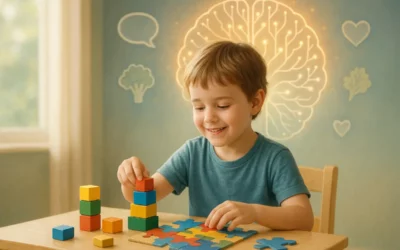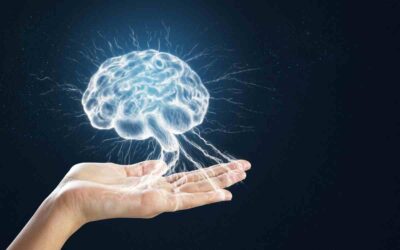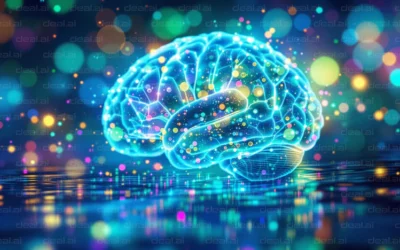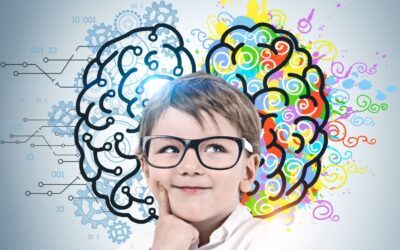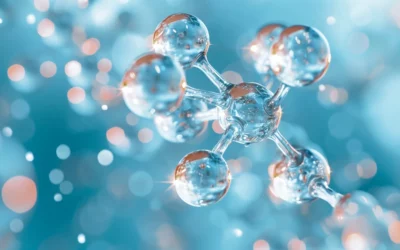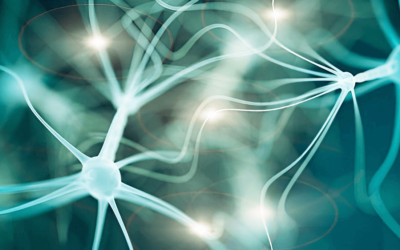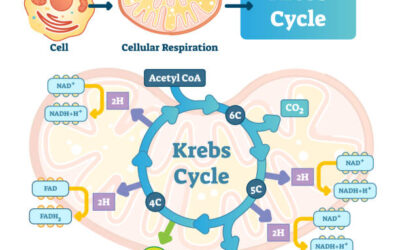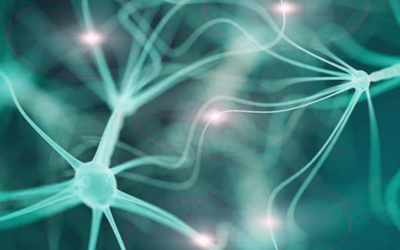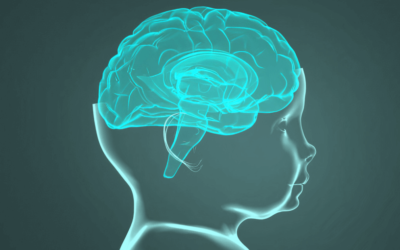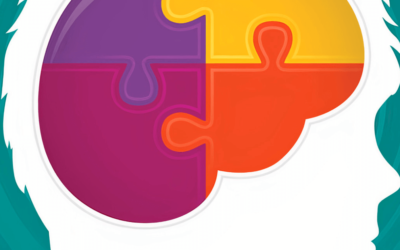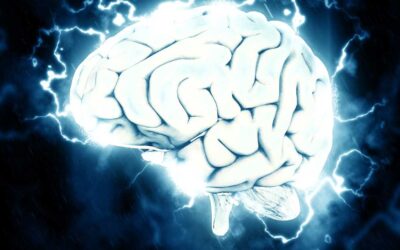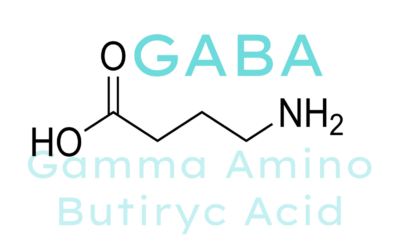Neuroplasticity
Evidence-based information
What is neuroplasticity in Autism?
There are 50-100 billion neurons in our brain. The relationships between them and their strength determine the task they perform. Neuroplasticity is the ability to change the neural connections and their strength, thereby transforming the function they provide. Neuroplasticity is an important feature of a healthy brain. For example, when you learn something new, say how to roller skate, your brain regions responsible for movement and balance change in order to stay on your feet more and more securely, and this is due to neuroplasticity.
So the brain is constantly changing. The less used abilities and the neural connections responsible for them decrease, while the ones used a lot get stronger. Neuroplasticity, therefore, does not heal in the traditional sense of the word, i.e. it does not repair damaged brain areas. Instead, the functioning of other, healthy parts of the brain changes, and they take over and relearn the lost abilities. The result, seen from the outside, is the same as if the injury had been healed since the lost functions are partially or completely restored.
In this section, you will find articles related to the possible use of neuroplasticity in autism.
Improving Brain Function in Autism
Supporting the development of a young child on the autism spectrum requires a multifaceted and highly individualized approach. This is especially...
Lithium Orotate and Brain Health: Natural Neuroprotection
Lithium is often associated with psychiatric medication, but at low doses, a form called lithium orotate is gaining attention for its potential...
Early Interventions for Autism
Introduction Early intervention for children with autism is a critical component of promoting positive developmental outcomes. Autism Spectrum...
L-Theanine: Unlocking the Power of Balance in Your Brain
In the fast-paced world, we live in, it's no surprise that many of us seek ways to enhance our mental health and cognitive function. Enter...
Unlocking the Power of Luteolin: A Natural Anti-inflammatory and Neuroprotective Agent
In recent years, there has been growing interest in the potential health benefits of natural compounds found in various foods and plants. One such...
Phosphatidylcholine and Brain Development: Unveiling the Power of a Key Nutrient
The human brain is a marvel of complexity and sophistication. As the epicenter of cognitive processes, emotions, and motor functions, its proper...
Unraveling the Potential of Huperzine A: How It Aids in Brain Development
The human brain is a complex and remarkable organ responsible for our thoughts, emotions, and cognitive abilities. As we grow and develop, the brain...
Unraveling the Neurodevelopmental Benefits of Inositol: Nourishing the Growing Brain
The human brain is a fascinating and complex organ that undergoes significant development from infancy through childhood. Proper brain development...
Unraveling the Genetic puzzle: MTRR Mutation and Autism Spectrum Disorder
Autism Spectrum Disorder (ASD) presents as a complex neurodevelopmental challenge impacting countless lives globally. While its roots remain...
Unraveling the Genetics of Autism: The Epigenetic Connection
Autism Spectrum Disorder (ASD) remains a complex and enigmatic condition that has intrigued researchers for decades. Understanding the genetic basis...
Environmental Toxins and Their Impact on Neurotransmitters
Environmental Toxins and Their Impact on NeurotransmittersEnvironmental toxins, such as pesticides, herbicides, air pollution, heavy metals, and...
Unraveling the Impact of Citrate, Glutamate, and Calcium on GABA and Glutamate Balance
[dsm_block_reveal_text block_reveal_text="Citrate and Corn-Derived Supplements: Potential Neurotoxicity" block_reveal_color="#5FB6B7"...
Factors Affecting GAD Enzyme and GABA Production
Gamma-aminobutyric acid (GABA) is a vital neurotransmitter that plays a significant role in calming the brain and promoting relaxation. GABA...
Chronic Viral Infections and Microbes: Unraveling the Connection to GABA and Glutamate Imbalances
The delicate balance between GABA and glutamate, two crucial neurotransmitters, is essential for maintaining optimal brain function and overall...
Seeking Help for GABA and Glutamate Imbalances: Unraveling the Factors Impacting Your Health
GABA and glutamate, two essential neurotransmitters, play a pivotal role in maintaining overall health and well-being. These neurotransmitters are...
The Intricate Dance of Methylation and the Krebs Cycle: Maintaining GABA and Glutamate Balance for Optimal Health
In the pursuit of a healthy mind and body, maintaining the delicate balance of neurotransmitters is crucial. Two essential neurotransmitters, GABA...
Carnosine for Brain Disorders: A Comprehensive Review
Carnosine has recently been gaining attention as a potential natural remedy for brain-related disorders. In a recent comprehensive review, Martin...
The Brain’s Best Ally: How Ashwagandha Promotes Optimal Brain Development
The human brain is a complex organ responsible for cognition, memory, and emotional regulation. As we grow and develop, the brain undergoes critical...
Restoring Balance: How Lithium Orotate Impacts GABA-Glutamate Balance in the Brain
The delicate balance of neurotransmitters in the brain is essential for proper cognitive function, emotional regulation, and overall mental...
Unlocking the Secrets of Bacopa: How It Supports Brain Development
The human brain is a marvel of complexity, continuously evolving and developing throughout life. Proper brain development is essential for optimal...
Alpha-GPC and Brain Development: Unleashing the Potential of a Vital Nutrient
The human brain is a marvel of complexity, continually developing and adapting from infancy through adulthood. Nutrition plays a crucial role in...
Excessive Neuroinflammation in Autism Spectrum Disorders May Be Linked to GABAergic/Glutamatergic Imbalance
Recent research into autism spectrum disorders (ASD) has indicated that an imbalance between theneurotransmitters GABA and glutamate may be linked...
How GABA and Glutamate affect glutathione levels
Gaba and glutamate are two neurotransmitters in the brain that can affect glutathione levels. Glutathione is a powerful antioxidant that helps to...
The Crucial Role of Folate in Methylation and Brain Development
Passive exercises for children with developmental delay or brain injury
Delacato method: with movement for intellectual development
According to the theory developed by Philadelphia neurologist Carl Henry Delacato and his team, there is a close connection between movement and the...
Movement developmental milestones: What should you pay attention to?
Children grow and develop at their own pace. This is a fact that a parent must be able to accept, just like the fact that their child may start...
Brain plasticity exercises
Benefits of neuroplasticity
Neuroplasticity can be a powerful tool for restoring normal brain functions, as well as for treating a range of neurological and mental health...
Can the brain be cured? – What is neuroplasticity?
Have you ever wondered if the brain can be "cured"? This is a question that has been debated for centuries, but recent research into the science of...
The Association of Social and Cognitive Impairment With Biomarkers in Autism Spectrum Disorders
GABA
GABA the natural antidepressant Gamma aminobutyric acid GABA, the calming neurotransmitter Gamma-aminobutyric acid is a natural...

